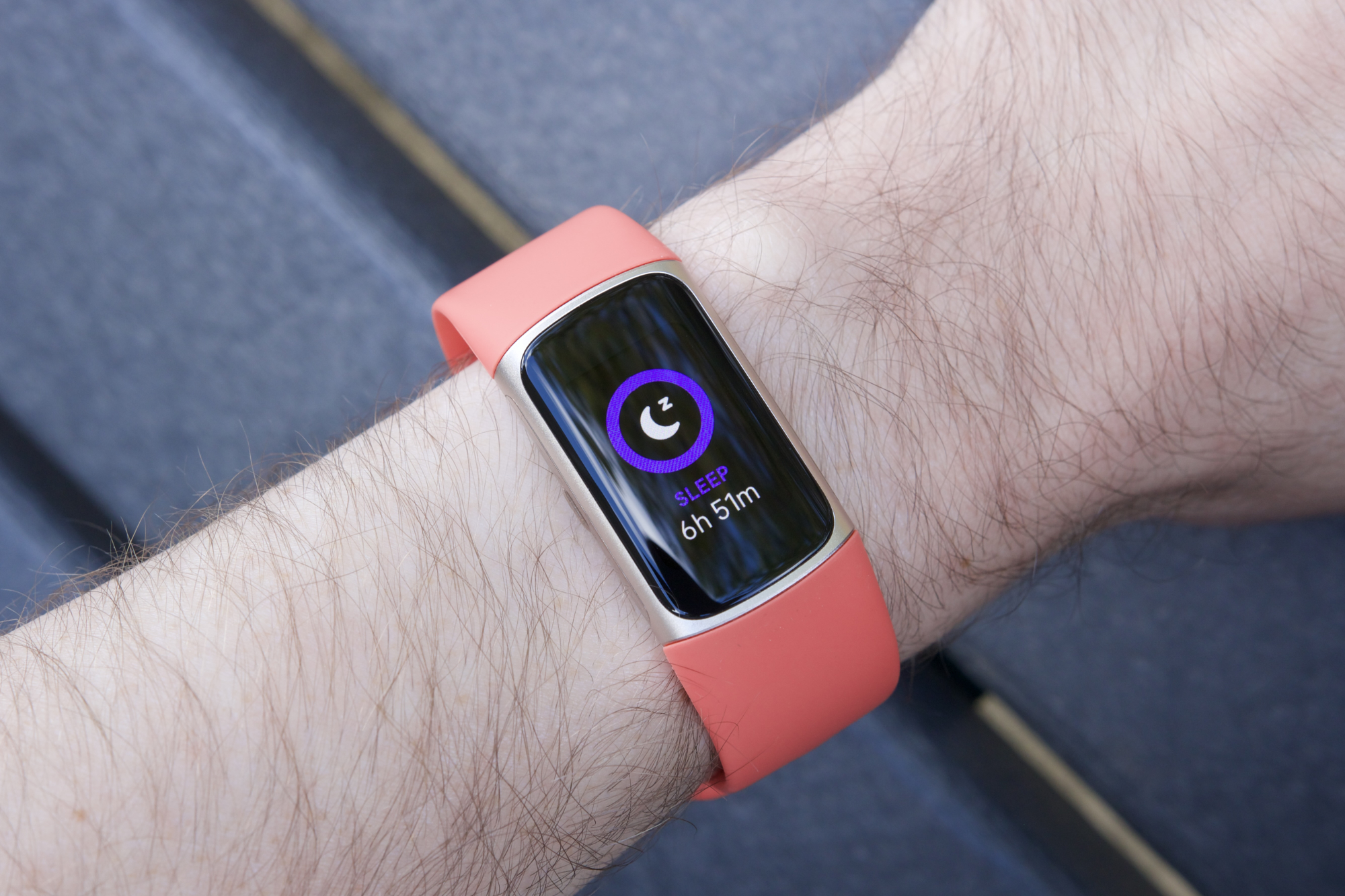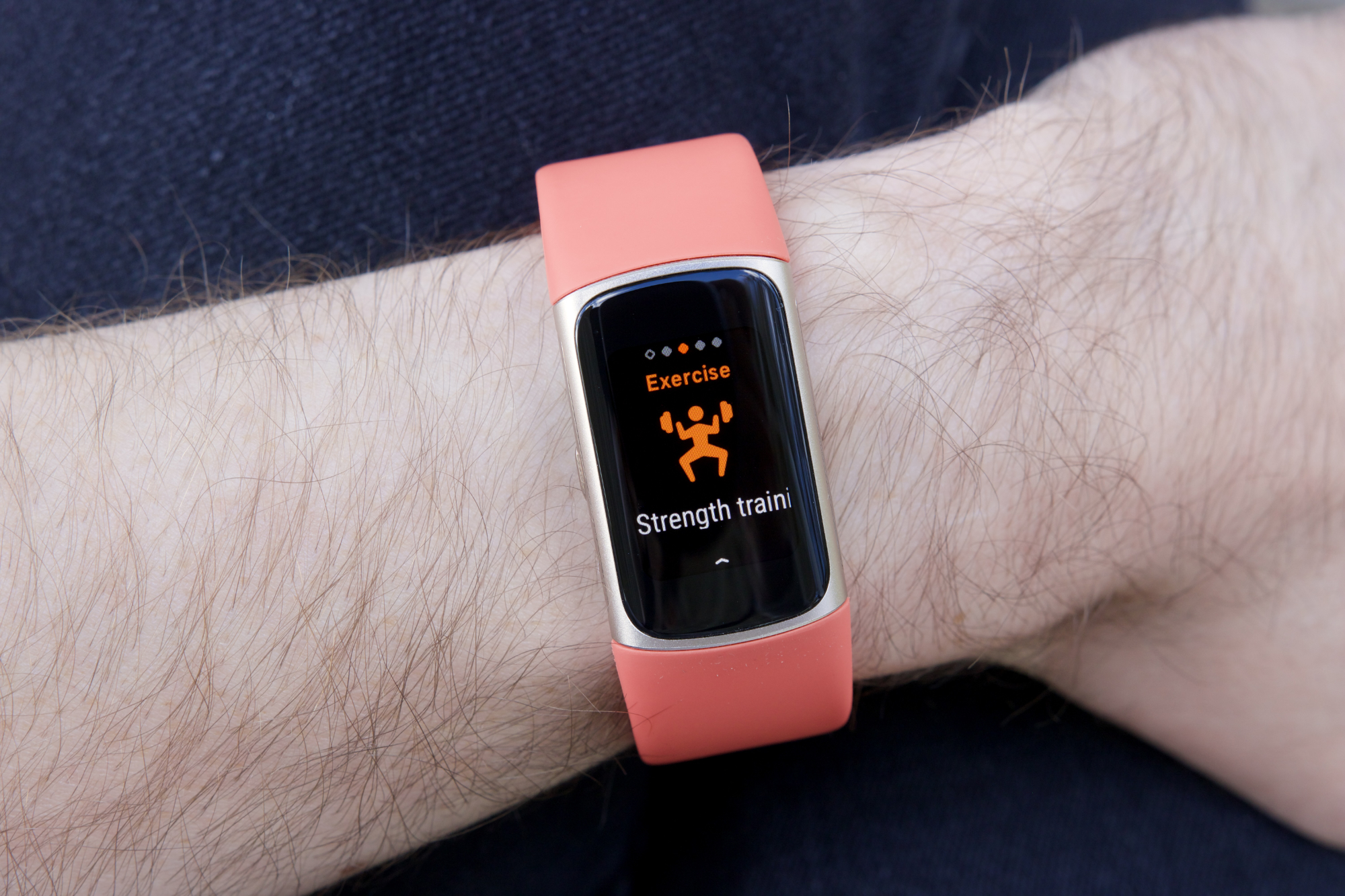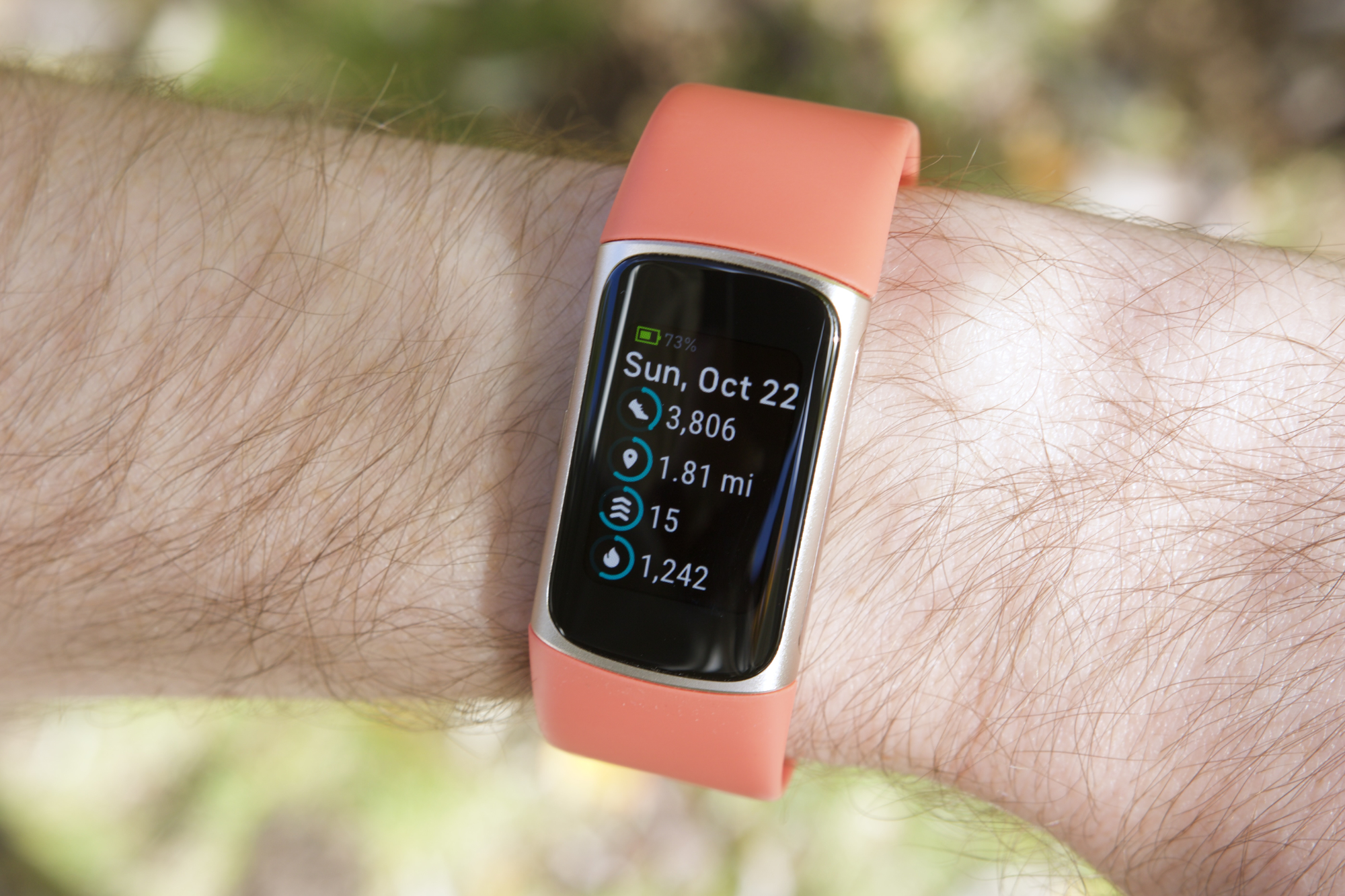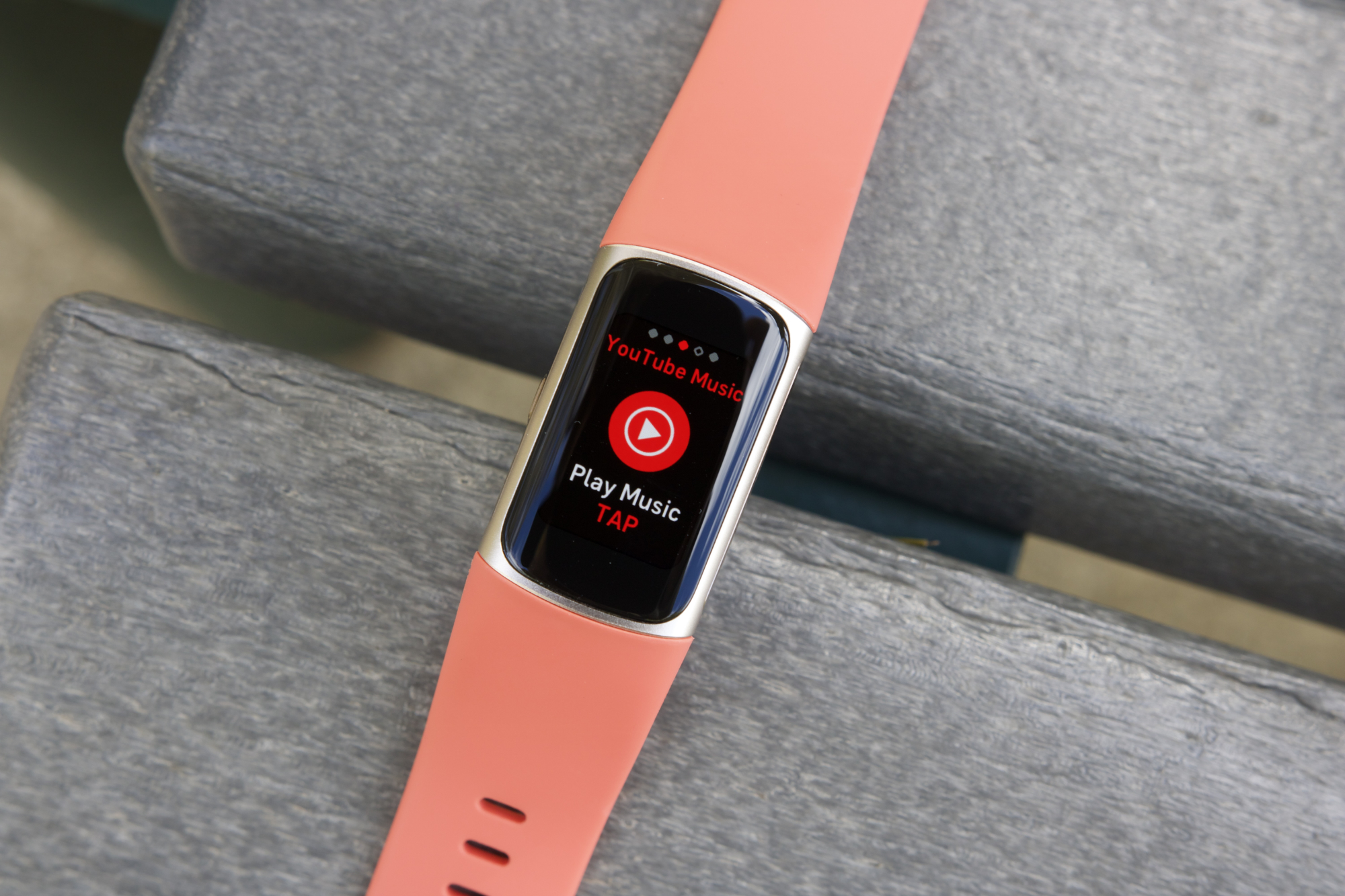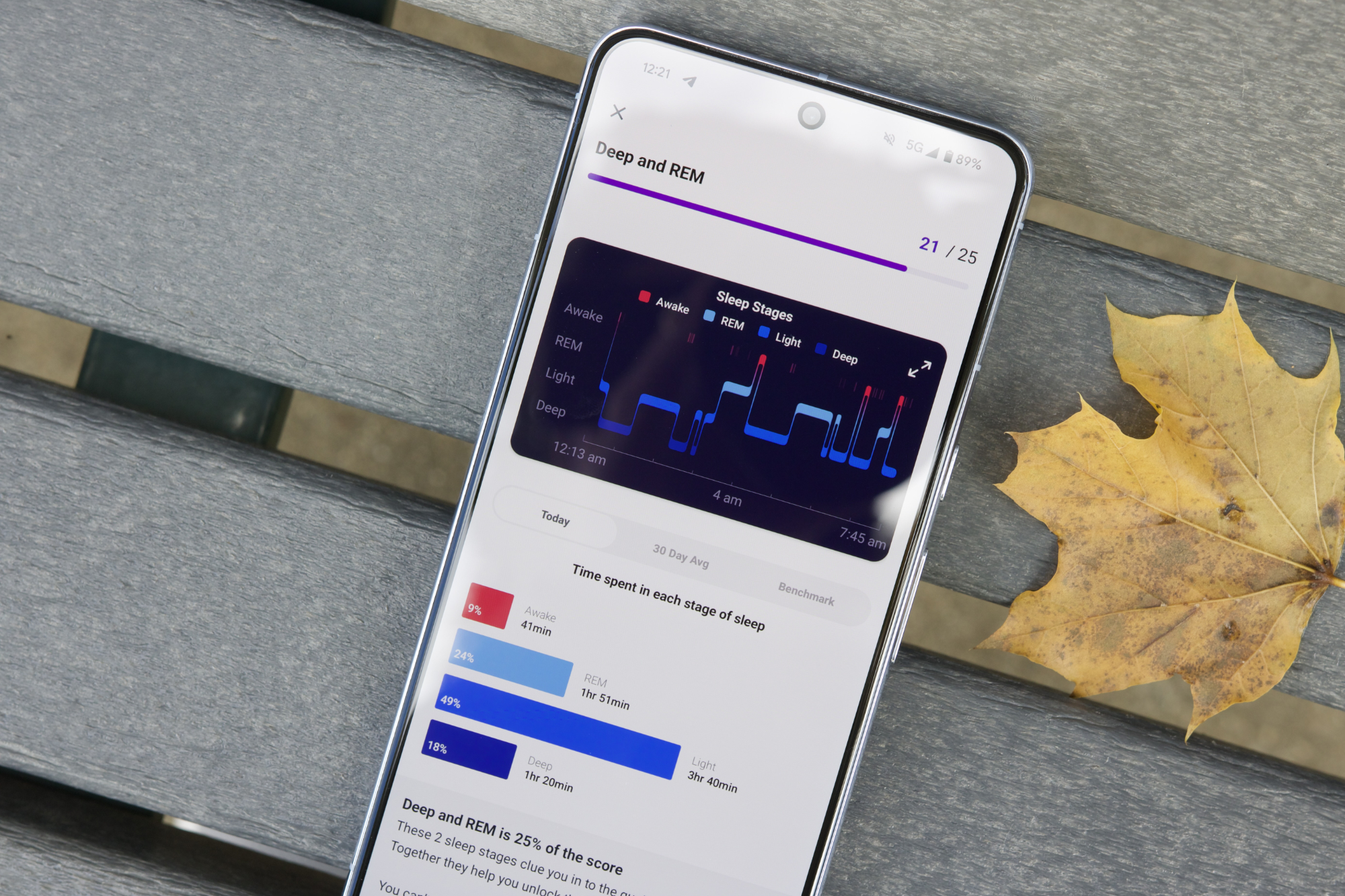“The Fitbit Charge 6 offers excellent health tracking and helpful Google apps in a sleek design — and at an incredible price.”
- Lightweight and comfortable to wear
- Robust health-tracking tools
- Built-in GPS
- Google apps work well
- Fast, responsive software
- Nearly a week of battery life
- Unreliable notifications
- No local music storage
- Many features require Fitbit Premium
This fall has been a busy one for Google. The company has released two new smartphones, a new smartwatch, and a new version of Android. But there’s something else that slipped through the cracks amid all that: the Fitbit Charge 6.
The Fitbit Charge 6 was announced in September, and it was quickly buried under more exciting announcements for the Google Pixel 8, Google Pixel 8 Pro, and the Google Pixel Watch 2. But to completely overlook the Fitbit Charge 6 would be a mistake. I’ve been wearing it for a little over a week, and for a $160 fitness tracker, it’s an impressive package.
Before you go and spend $350 on the latest Pixel Watch or another smartwatch, here’s why you may want to consider the Fitbit Charge 6 instead.
Why I love wearing the Fitbit Charge 6
After wearing the Apple Watch Ultra and Apple Watch Ultra 2 earlier this year, swapping to the Fitbit Charge 6 came as a bit of a shock. I’ve been using two of the biggest and heaviest smartwatches you can buy, and going to the Fitbit Charge 6’s small, petite design threw me for a curve — but a very good one!
The Fitbit Charge 6 looks a lot like the Fitbit Charge 5 that came before it. It has a traditional fitness band shape with a 1.04-inch AMOLED screen and an aluminum body. It doesn’t push fitness tracker design in a bold, new direction, but it works very well. I’ve found the Charge 6 incredibly comfy to wear, the screen looks great, and the included silicone band feels very nice. I often forgot I was wearing the tracker, which is perhaps the best compliment I can give its design.

I also really like the side button on the Fitbit Charge 6. It’s not a mechanical button, but it looks like a button, and pressing it gives you haptic feedback (sort of like the Home button on the iPhone 7). You can press it to wake the Charge 6’s screen or go back to your watch face when you’re in a menu or an app. Fitbit removed the button on the Charge 5, and I’m thrilled to see it make a return here.
Although Fitbit hasn’t created any new health-tracking features for the Fitbit Charge 6, all of the usual suspects are here. The big upgrade this year is an improved heart rate sensor that Google claims is 60% more accurate than that of previous Charge models and offers the “most accurate heart rate on a Fitbit tracker yet.”

Whether going on outdoor walks and running on a treadmill indoors, the Fitbit Charge 6’s heart rate readings are often right in line with the heart rate I get from my Oura Ring — sometimes within a single beat per minute. Some workouts have had larger variances, but that’s usually the case when comparing any two wearables side byside. It’s been a while since I last wore a Fitbit, so I can’t speak too much to how the Charge 6’s readings compare to older models, but I’ve been really pleased with its performance here.
Beyond tracking your heart rate, all of the health/fitness features you’d expect are present. The Fitbit Charge 6 tracks your steps, has over 40 exercise modes to choose from, and can automatically detect select workouts (like walking and running). Some other highlights include:
- Sleep tracking
- SpO2 tracking
- Heart rate variability (HRV)
- High and low heart rate notifications
- Irregular heart rhythm notifications
- ECG app
- EDA Scan app (for stress management)
The good news is that all of this works as advertised. I really like Fitbit’s sleep tracking; it gives you an easy-to-understand sleep score that’s based on your time asleep, sleep stages, movement, and heart rate. Fitbit’s sleep score is often more generous than my Oura Ring, but it never feels like it’s totally off base. And while I hope I never have to use them, it’s great having irregular heart rhythm notifications on such an affordable fitness tracker.
I often forgot I was wearing the Fitbit Charge 6.
I’ve also been happy with the general performance of the Fitbit Charge 6. The raise-to-wake gesture for the display works well, and swiping through the user interface is very snappy. I expected it to be a bit sluggish, but it’s honestly as fast as I could have asked for.

There’s one other thing I really love about the Fitbit Charge 6, and that’s the battery life. I began wearing the Fitbit Charge 6 at 9:50 p.m. on Friday, October 13, with the battery fully charged to 100%. It wasn’t until 9:50 p.m. Thursday, October 19, that the Charge 6’s battery finally got down to 16%.
That was with sleep tracking each night and six recorded workouts — including a mix of outdoor walks, treadmill runs, and strength training. This was also with the always-on display turned off. You can turn it on to always see the time without having to tap the screen or raise your wrist, but if you do this, expect that to cut into your battery life a bit.
The Fitbit Charge 6 also recharges fairly quickly. The proprietary charger magnetically attaches to the back of the tracker and takes it from zero to 100% in about an hour and 20 minutes.
Good news for Google fans

Along with its improved heart rate tracking, the other big story about the Fitbit Charge 6 is how it’s been Google-ified. There are a number of Google apps now available on the Charge 6, including Google Wallet, Google Maps, and YouTube Music.
Google Wallet replaces Fitbit Pay and allows you to make contactless payments with your credit or debit card. Swipe down from the top of the Charge 6, tap the Google Wallet icon, and you’re ready to pay. It’s worked flawlessly each time I’ve used it.
Google Maps also hasn’t given me any issues. When you start turn-by-turn navigation on Google Maps on your phone, you can tap an icon on the Fitbit Charge 6 to mirror the directions from your phone on the tracker — including vibration alerts when you need to turn, get off an exit, etc. I found the alerts to be slightly delayed compared to using Apple Maps navigation with an Apple Watch, but it’s still a nice addition to have.
What about YouTube Music? Similar to Google Maps, starting a song on YouTube Music on your phone allows you to pause, resume, and skip tracks on the Charge 6. However, this YouTube Music app is exclusively for controlling playback on your phone. There’s no way to download songs from YouTube Music, or any music app, for that matter, onto the Fitbit Charge 6.
As much as I would have liked to have local music storage, it is exciting to see all of these Google services trickle down to the Fitbit Charge 6. Google Wallet supports more cards than Fitbit Pay did, Google Maps has proven handy a couple of times during my testing, and although I don’t personally use YouTube Music, it’s a great add-on for anyone who does. It’d be even better if it supported offline playback, but I digress.
The new Fitbit app

While you can view many of your health/fitness stats directly on the Fitbit Charge 6, the main way you interact with this data is through the Fitbit mobile app — which received a significant redesign earlier this year.
The core design of the app is largely the same as before. On the Today page, you see your primary goal at the top of the screen, some secondary ones below it, and a list below that detailing your other health data. Fitbit now offers a few different “focus” options to change the four goals at the top of the page, or you can create your own custom focus and select whichever metrics are most important to you. From there, you can show, hide, and rearrange all of your other health data further down on the page.

I love how much control Fitbit gives you over how the Today page looks. You can prioritize the information you care about the most, hide what you don’t care about, and the UI for this is all super intuitive — just tap the pencil icon on the Today page and you’re ready to start customizing things.
The other two pages, Coach and You, also work well. Coach is where you’ll find all of Fitbit Premium’s guided workouts and mindfulness sessions. The library has a really generous amount of content to sift through, and you can easily search for workouts by activity type, duration, your preferred instructor, and more. The You page offers shortcuts to your personal health goals, Fitbit friends, and badges.
Overall, I think this updated Fitbit app looks quite nice. You’re still seeing the same data as before, but many of the pages have been updated with a more modern, simplified look. The Fitbit app always felt outdated to me, and this update does a (mostly) good job of cleaning things up. There are a few pages here and there that still use the old app design, but for the most part, this is a welcome change. Now just give me a dark mode, Fitbit. Please.
A few nagging issues

I’ve been surprisingly happy with the Fitbit Charge 6, but there are a few issues that hold it back from being a home run. My biggest gripe is that notifications are extremely unreliable. During my first day with the Charge 6, I was confused as to why I wasn’t getting any notifications from my Google Pixel 8 Pro. As it turns out, you have to manually enable notifications from the Fitbit app and then select which apps on your phone that you want to send notifications to the tracker. This isn’t explained anywhere during the setup process, and figuring it out took me longer than I’d like to admit.
However, even after enabling notifications, I’ve still had trouble with them. Some days, notifications are sent to the Charge 6 without fault and work as intended. On other days, I don’t receive any notifications at all — despite not changing any settings. In my experience, notifications have long been hit-or-miss with Fitbits, and that doesn’t appear to have changed with the Fitbit Charge 6.
I already mentioned it above, but the lack of local music storage on the Fitbit Charge 6 really is a bummer. The tracker has built-in GPS, opening up the possibility of going on runs or walks without hauling your phone with you, but not offering any way to store songs on it just kills that convenience for me.

Finally, I don’t love how many features are locked behind Fitbit Premium. You don’t need Fitbit Premium in order to use the Fitbit Charge 6, but many of its best features are locked behind the subscription — including your Daily Readiness Score, guided in-app workouts, in-depth sleep- and stress-tracking data, mindfulness sessions, and more. If you’re interested in buying the Fitbit Charge 6, you should plan on getting a Fitbit Premium subscription if you want to get the most out of it.
Fitbit Charge 6 price and availability

The Fitbit Charge 6 is available for purchase now. It costs $160 and is available in three styles: an obsidian band with a black aluminum case, a porcelain band with a silver case, or a coral band with a champagne gold case. You can buy it from the Google Store, Fitbit’s website, and retailers like Amazon and Best Buy.
The Fitbit Charge 6 also comes with a six-month free trial to Fitbit Premium, a $60 value. After that, Fitbit Premium costs $10 a month.

How does all of that stack up to the competition? The Pixel Watch 2 also uses Fitbit’s health/fitness platform, but you get a couple of additional sensors (a temperature sensor and a continuous EDA sensor), plus a full-fledged Wear OS smartwatch experience. However, at $350, it’s also considerably more expensive — and it’s subject to the same Fitbit Premium membership.
Another option to consider is the Garmin Vivomove Trend. It’s a hybrid watch that looks great, shows basic health data on a hidden screen, and works with the excellent Garmin Connect app — giving you access to a wide range of health tracking tools, all without any subscription needed.
Should you buy the Fitbit Charge 6?

I’ll be honest: I didn’t expect to be all that impressed by the Fitbit Charge 6. On paper, it’s the least interesting of Google’s most recent hardware releases, and it doesn’t look all that different from the Charge 5.
The Fitbit Charge 6 really surprised me.
But after wearing and living with the Fitbit Charge 6, I’m happy to admit that it really surprised me. If you don’t want to wear a smartwatch, but still want to track your health and fitness — and with pretty comprehensive fitness tracking at that — the Fitbit Charge 6 is a great option. It’s comfortable, has just about every health/fitness feature you could ask for, delivers great battery life, and is paired with a very good companion app. And at just $160, it’s one of the better values out there. The Fitbit Premium element cuts into that a bit, but if you value what comes with the subscription — from the extra health data to the guided workouts — it’s very much still worth it.
Not everyone wants a smartwatch. Not everyone wants to spend $300-plus on a fitness tracker. Some folks want a wearable that’s small, affordable, and reliably tracks their activity. That’s precisely what you get with the Fitbit Charge 6. If it’s the type of wearable you’re looking for, it’s one of the better options you can get.




